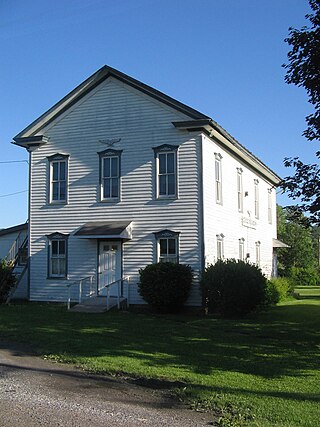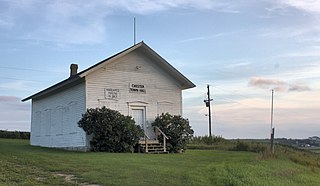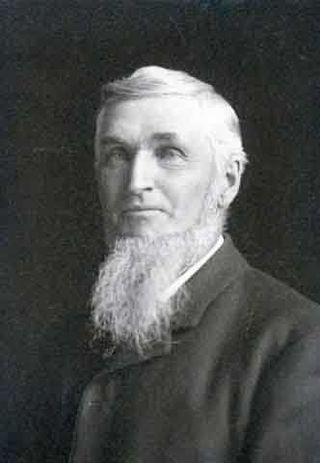The Agricultural Wheel was a cooperative alliance of farmers in the United States. It was established in 1882 in Arkansas. A major founding organizers of the Agricultural Wheel was W. W. Tedford, an Arkansas farmer and school teacher. Like similar farmer organizations such as the Southern Farmers' Alliance, the Louisiana Farmers' Union, and the Brothers of Freedom, the Agricultural Wheel had been formed to expose and correct the injustices and oppressions done to the small farmers by merchants, grain elevators and the railroads. The Wheel promoted a radical agenda including currency expansion through free silver; closing all national banks; regulation or nationalization of the railroads, the telephones and the telegraph; allow only Americans to purchase public lands; impose an income tax on high incomes; and elect senators by popular election instead of by state legislatures. The Wheel encouraged farmers to join local cooperatives, avoid the debt cycle, and avoid one crop overemphasis on cotton.

Oliver Hudson Kelley was one of the key founders of the National Grange of the Order of Patrons of Husbandry, a fraternal organization in the United States.

Francis Marion McDowell was an American banker and farmer and a co-founder of the National Grange of the Order of Patrons of Husbandry, a fraternal organization in the United States.

Reverend Aaron Burt Grosh, a Universalist minister, was one of the eight founders, and the first chaplain, of the National Grange of the Order of Patrons of Husbandry, a fraternal organization in the United States. He had a major part in the design of the Grange ritual and was also responsible for the various songs used during various celebrations of the Grange.
John Richardson Thompson was one of the eight founders of the National Grange of the Order of Patrons of Husbandry, a fraternal organization in the United States.

William M. Ireland was one of the eight founders of the National Grange of the Order of Patrons of Husbandry, a fraternal organization in the United States.

Caroline Arabella Hall was one of the eight founders of the National Grange of the Order of Patrons of Husbandry, an American agricultural fraternal organization better known as The Grange or Grange Hall.

The history of agriculture in the United States covers the period from the first English settlers to the present day. In Colonial America, agriculture was the primary livelihood for 90% of the population, and most towns were shipping points for the export of agricultural products. Most farms were geared toward subsistence production for family use. The rapid growth of population and the expansion of the frontier opened up large numbers of new farms, and clearing the land was a major preoccupation of farmers. After 1800, cotton became the chief crop in southern plantations, and the chief American export. After 1840, industrialization and urbanization opened up lucrative domestic markets. The number of farms grew from 1.4 million in 1850, to 4.0 million in 1880, and 6.4 million in 1910; then started to fall, dropping to 5.6 million in 1950 and 2.2 million in 2008.
The Granger Laws were a series of laws passed in several midwestern states of the United States, namely Minnesota, Iowa, Wisconsin, and Illinois, in the late 1860s and early 1870s. The Granger Laws were promoted primarily by a group of farmers known as The National Grange of the Order of Patrons of Husbandry. The main goal of the Granger was to regulate rising fare prices of railroad and grain elevator companies after the American Civil War. The laws, which upset major railroad companies, were a topic of much debate at the time and ended up leading to several important court cases, such as Munn v. Illinois and Wabash v. Illinois.
The farmers' movement was, in American political history, the general name for a movement between 1867 and 1896. In this movement, there were three periods, popularly known as the Grange, Alliance and Populist movements.

Rural Free Delivery (RFD), since 1906 officially rural delivery, is a program of the United States Post Office Department to deliver mail directly to rural destinations. The program began in the late 19th century. Before that, people living in rural areas had to pick up mail themselves at sometimes distant post offices or pay private carriers for delivery.

David Wyatt Aiken was a slave owner, Confederate army officer during the American Civil War and a reconstruction era five-term United States Congressman from South Carolina.

The Oliver Kelley Farm is a farm museum in Elk River, Minnesota, United States. From 1850 to 1870 it was owned by Oliver Hudson Kelley, one of the founders of the National Grange of the Order of Patrons of Husbandry, the country's first national agrarian advocacy group. The Oliver Kelley Farm is operated as a historic site by the Minnesota Historical Society. It was declared a National Historic Landmark in 1964 under the name Oliver H. Kelley Homestead—which also places it on the National Register of Historic Places—for its national significance in the themes of agriculture and social history. It was nominated as a representative of the beginnings of agrarian activism in the United States, setting the stage for the Farmers' Alliance and the People's Party of the late 19th century.

Eagle Grange No. 1 was organized on March 4, 1871 by a group of rural farmers who had become concerned about the rising costs of farming in the post Civil War economy. It is in Clinton Township, Lycoming County, Pennsylvania in the United States. Eagle Grange No. 1 was the first grange to be organized in Pennsylvania, two years before the formation of the Pennsylvania State Grange and four years after The National Grange of the Order of Patrons of Husbandry, better known as the National Grange was founded in Fredonia, New York by Oliver Hudson Kelley. The chief objectives of the Eagle Grange No. 1 were the establishment of a co-operative purchasing program for farmers, the lowering of railroad rates, and the establishment of rural free delivery by the United States Postal Service. The Grange was one of the first national organizations to give equal status to female members.

The Bear Valley Grange Hall is a historic meeting hall in Chester Township, Minnesota, United States. It was built in 1874 for the exclusive use of a local chapter of the National Grange of the Order of Patrons of Husbandry, an early farmers' advocacy group and fraternal organization. The chapter folded in the 1880s and the building has been used since as the Chester Town Hall. It was listed on the National Register of Historic Places in 1989 for having local significance in the theme of social history. It was nominated for being the only surviving Grange hall in Wabasha County—and one of only a few in Minnesota—and a rare example of a purpose-built Grange hall, as most chapters met in existing spaces like schools.

Crescent Grange Hall #512 is a former meeting hall of the Grange agricultural society in Linwood Township, Minnesota, United States. It was built from 1881 to 1882 by a chapter of the State Grange of Minnesota, the first state-level subdivision of the National Grange. It was listed on the National Register of Historic Places in 1979 for its local significance in the themes of agriculture and social history. It was nominated for being a well preserved example of an early meeting hall built by a subordinate Grange.

The Order of the Sovereigns of Industry, established in 1874, was an American mutualist movement targeted at urban workers which attempted to end perceived social ills through the establishment of consumer cooperatives. The organization's form and mission was directly inspired by the Order of Patrons of Husbandry, a parallel organization established for the benefit of American farmers. After a few years a lengthy and severe financial depression of the American economy caused a net cash flow crisis in the stores associated with the organization beginning in 1878. Deep financial woes forced the dissolution of the Order in 1880.

Oren Cornelius Gregg was a farmer and educator from Minnesota. In the 1880s, agricultural education in Minnesota was in trouble: farmers would not travel to the Twin Cities for classes, and university students did not want to study farming. Gregg, a successful dairy farmer from Lyon County, saved the day by bringing lectures directly to farmers. Beginning in 1885, he led the Minnesota Farmers' Institute, a public lecture series that became the agricultural extension service at the University of Minnesota. Through the institutes that he held across the state, Gregg encouraged farmers to diversify their crops and taught them how to make dairy farming more efficient.
Mary Anne Bryant Mayo was an American farm organizer for the Patrons of Husbandry. She is known for her work as part of the American Granger movement to better farm communities.



















